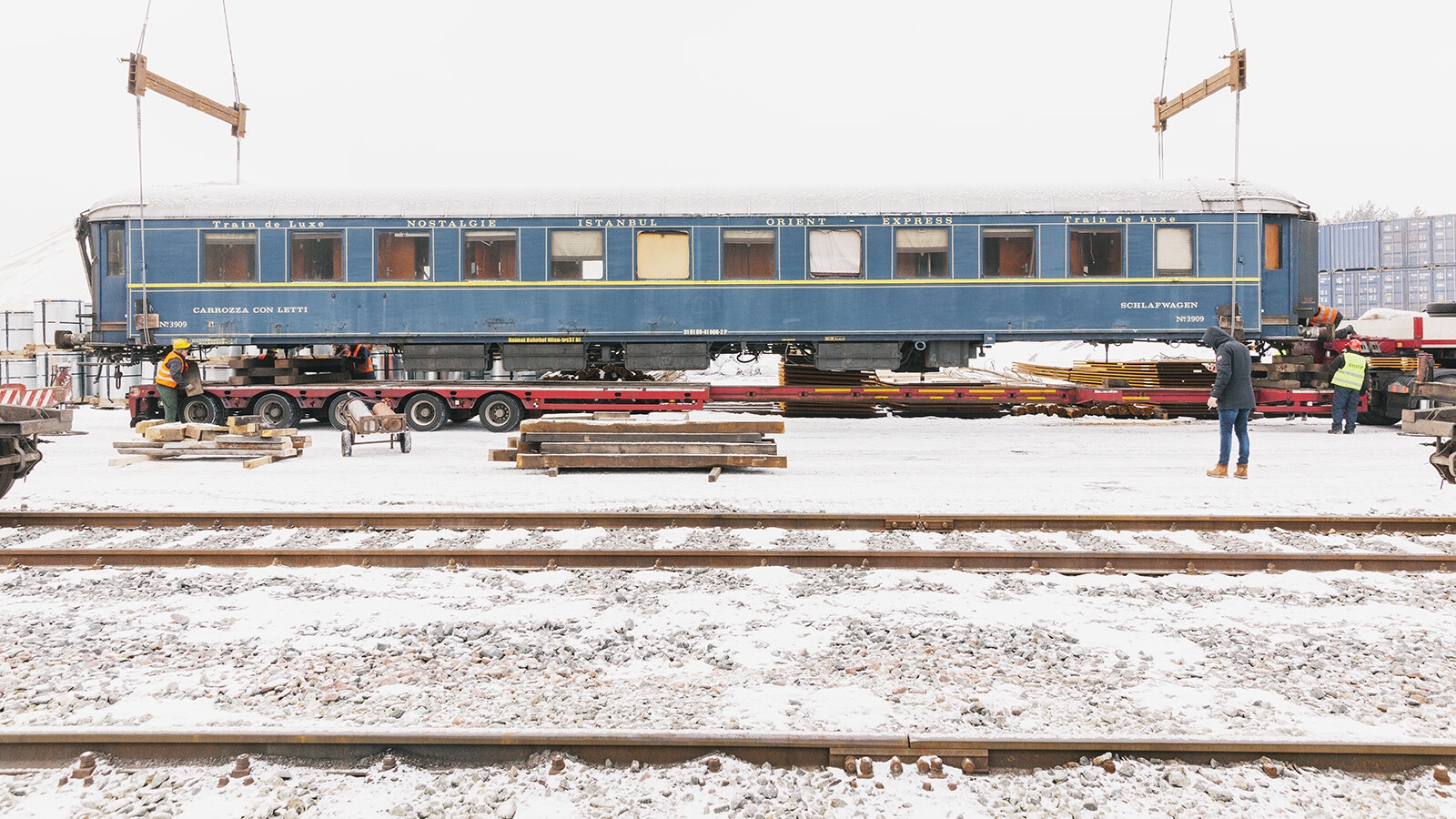
French railway aficionado Arthur Mettetal was watching a video on YouTube when some parked train carriages in the corner of the frame caught his eye.
The cars were painted a distinctive night-blue hue once associated with the Orient Express, the famed long-distance trans-Europe passenger train synonymous with 20th century travel glamor.
While the train immortalized by crime author Agatha Christie no longer exists, luxury travel company Belmond operates an Orient Express homage between London and Amsterdam, and hotel group Accor is launching an Italy-based service under the same name in 2023.
Mettetal wasn’t just a railway fan, he was working on a PhD on the history of the Orient Express. His research involved trying to ascertain how many original Orient Express train carriages still exist today, where they were located, who owned them and what condition they were in.
He knew some vintage carriages were in service — like those that operate the Belmond Orient Express route — and others were on show in museums. But he figured many of the cars were scattered across the globe, forgotten.
Mettetal spent most of 2015 hunting these abandoned carriages, scrolling through archives, talking to railway fans on message boards and combing through online videos. Every so often, he’d spot a clue that looked promising, like the blue carriages in the YouTube video.
Mettetal hit pause on the video and examined the frame closer. The video had been uploaded anonymously and there wasn’t much accompanying information. But it was just possible to make out the name of a station on the screenshot: Małaszewicze.
Through Google, Mettetal discovered there were several places in Poland named Małaszewicze. He looked each spot up on Google Maps, switching to 3D view and zooming in, searching for the distinctive blue carriages with their white roofs.
And then, bingo, he found what he was looking for: a 13-carriage train that looked suspiciously like the Orient Express, parked up at a Małaszewicze station on the border between Poland and Belarus.
Speaking to CNN Travel today, Mettetal says this was a “magical” moment.
“Thirteen cars in one go!” he exclaims. “It’s like discovering a treasure.”
Tracking down the train
While spotting the train on Google was “an incredible feeling,” Mettetal tried to manage his expectations, unsure why the carriages were there, what state they might be in, and whether they’d been moved since the satellite image was taken.
So he traveled to Małaszewicze to check them out in person.
Mettetal says he’ll never forget the moment he arrived at the Polish border, a photographer friend in tow.
“After driving for hours to reach the place where we thought we would find the train, we arrived at night on an active border zone,” says Mettetal.
Not only was it dark, the landscape was shrouded in snow. But the two men could still make out the blue carriages. Printed on their side was “Nostalgie Istanbul Orient Express,” the name of a 1970s private rail venture that used original Orient Express cars to transport travelers from Paris to Istanbul. Mettetal and his friend were overjoyed.
“It is an indescribable feeling. We were looking at the object of our research, the train we had seen through the Google 3D views,” recalls Mettetal.
Because they were in a border zone, Mettetal and the photographer were soon told to leave by police. The two returned the following day at dawn, accompanied by a translator and Guillaume de Saint Lager, the vice president of Accor’s Orient Express offshoot, who was also interested in inspecting the train.
As the sun rose, the group circled the carriages. Mettetal estimated they dated back to the 1920s and 30s and had sat there, dormant, for at least a decade.
Mettetal says peering inside the carriages was another “great moment for a historian.”
“All the decorations were intact and it was as if time had stood still,” he says, adding there was “almost no damage, just the wear and tear of time.”
Of the 13 carriages, nine were luxurious sleeping cars.
“We then spent two full days documenting the entire interiors and exteriors of the cars while continuing our research into their history and the reasons why they were parked there,” says Mettetal.
Renovation and restoration
Over the next two years, Accor’s Orient Express team tracked down the owner of the Małaszewicze carriages. They also found four additional carriages parked in other countries, including Germany and Switzerland. Accor negotiated a purchase deal for a total of 17 cars, including 12 sleeper cars, a restaurant, three lounges and one van. The carriages were then transported by police convoy across Europe to France.
Fast forward to today and Accor’s Orient Express group has grand plans for the rediscovered carriages. The goal is the cars will operate on a Paris to Istanbul route from 2024, a reimagined version of the Nostalgie Istanbul Orient Express.
The carriages are currently being renovated by Parisian architect Maxime d’Angeac, who tells CNN Travel the “once in a lifetime” project was the kind that “you cannot refuse.”
The interior of the rediscovered carriages includes Art Deco marquetry panels by English decorators Morrison and Nelson, as well as glass panels by French craftsman René Lalique. The first time d’Angeac saw the existing interiors, he says he felt “real emotion.”
D’Angeac acknowledges that the original Orient Express was known in its era as the pinnacle of luxury, comfort and design. He wants the renovated carriages to live up to that reputation.
“The ambition of Accor is to restore and to rebuild the same kind of myth, of legend, and to have an exceptional train,” he says.
Renovating century-old carriages isn’t easy, adds d’Angeac, the interiors are smaller than what the modern traveler might expect. Historic assets have to be preserved, but modern comforts and security also need to be incorporated.
New technology and methods will be used where appropriate, but d’Angeac hopes travelers won’t notice the 21st century touch.
“Our intervention should be timeless,” is how d’Angeac puts it.
As for Mettetal, he’s finished his PhD, but he remains fascinated by the Orient Express, particularly the carriages he tracked down on YouTube. He’s also now Accor’s Orient Express heritage and culture director.
“These cars have a rich history, from their construction in the 1920s to their rediscovery,” says Mettetal. “It would be very interesting to retrace their entire journey, countries and cities crossed during all these years.”







